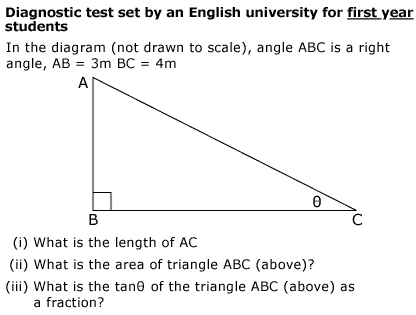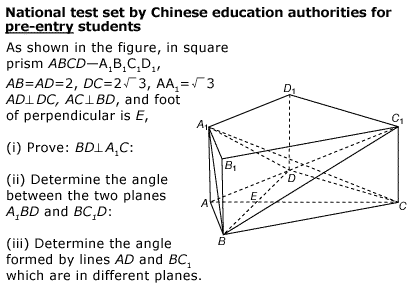The story about the Chinese and British tests in mathematics was making rounds last year. One can easily agree that a British test is a sign of degradation of mathematical education:
It is harder to explain why the Chinese test appears to me pedagogically misguided in a subtler way:
Any comments from my readers?


Chinese people do a lot of hard math in high school. but in the end, no one ever uses them.
Problem in Chinese education:
People learn things they don’t need, and people who like it can’t fulfill their full potential.
It’s such a bad economical decision to let every high school student to study math to that level.
Many those students will never even touch it after they go to college(suppose they are not math related major)
The people in Chinese’s IMO team is the same. most people tries to do math Olympiad in China is not because they interest in it, it’s because they have enough talent in it, and getting into IMO, or CMO or even lower teams can get those people into good colleges. These competitions are used only for getting them into colleges.
and when those people get into good colleges, they start to study things they actually like or makes them money.
The people who are actually into math not always good enough to beat someone who have a lot of talent. and those people who in later life might want to have a mathematical career never get attention or training, because the talented people took the chance from them.
you don’t see many talented mathematical researchers in China. And most people who shined in IMO was never seen again in mathematics.
In the end. Britain wins.
By: Mgccl on November 30, 2008
at 9:20 am
If this is a ‘square’ prism then the diagram is downright misleading.
By: Tristram Brelstaff on November 30, 2008
at 11:07 am
I agree @tristram the diagram is such that this is a dishonest problem if it is to be compared with the pythagoras of the British question. Perhaps this is using the mathematics that all students have in China to set a context to discriminate between those who have the comprehension skills and those who don’t. The questions cannot be compared because they are not doing the same thing.
By: Nick Hood on November 30, 2008
at 11:18 am
@Tristram and Hood
Square prism is often used to mean the same thing as right prism, which this certainly appears to be. The side faces are rectangles, but the top and bottom faces are not. I don’t see anything technically wrong with the question. With linear algebra it isn’t even a particularly difficult question. (It certainly would have stumped me before I entered university in Sweden, but it wouldn’t have been a problem after the first term.)
But I guess Alexandre didn’t mean that there was something technically wrong with it when he wrote that it was pedagogically misguided. You’ve made me very curious.
I love this blog, by the way.
By: Johan Swanljung on November 30, 2008
at 2:24 pm
Mgccl is totally right. Chinese students are taught to learn in a “formal” way, they do things supposed to be shiny, instead of things interesting to themselves. What a pity.
By: TAKI on December 1, 2008
at 6:36 am
@ Taki and Mgccl,
You guys are making pretty bad assumptions about the motivations of chinese maths students. I know several such IMO standouts, and let me tell you, they’re not leaving math anytime soon.
By: Daveed on December 1, 2008
at 5:26 pm